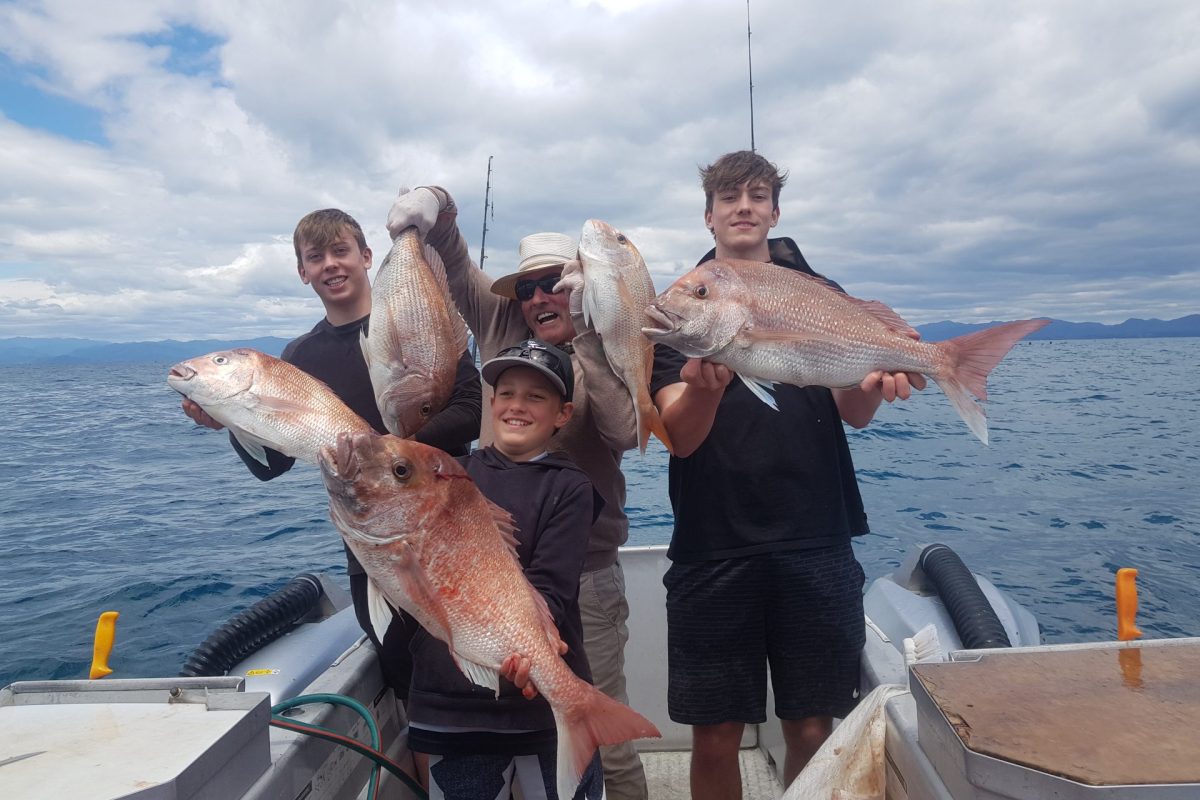Go Fish

Hook into a favourite pastime
Fishing is quintessentially Kiwi – young and old, experienced angler or wharf bound weekender – there’s no barrier to age or skill. And, with summer here and outdoor recreation in focus, there’s never been a better time to brush up on some fishing know-how, can-do before heading for the coastline – we boast 15,000 kilometres of it – or lakeside. Afterall, it’s not just the reel you’re holding or the tackle you’re sporting, that guarantees a catch of the day!
Ocean bound
If you’re keen on boat fishing off the coast this summer – Bay of Plenty and beyond – do your homework on the conditions, particularly bar crossings – especially if there’s any swell, advises Mike Boswell, skipper of Whakatane’s The Gambler fishing charter.
“Here in Whakatane, we’re fortunate to have some great fishing right on the doorstep – large boat, dinghy or kayak – you don’t have to go far. The 20m mark off Kohi Point out the Ohiwa harbour entrance is a good place to start,” says Mike. “Ten nautical miles east of Whakatane lies the Opotiki mussel farm – covering approximately 3800 hectares at a depth of 36 – 42m of water. The mussel farm provides shelter and a source of food to the fish – namely snapper and terakihi – just don’t anchor there as you’ll risk hooking onto the mussel lines.”
As for bait? “Skipjack tuna or bonito always works a treat – you should come home with a decent feed of snapper, gurnard or kahawai. Smaller hooks are the go-to if you want to target terakihi, but it’s not a good idea to use burly around the mussel farms as you risk attracting kingfish which very good at taking your line.”
Getting up nice and early, with the change of light, is one of the best times to head out on the boat or hit the sand for surf cast, says Mike. And, ensuring you fish with the seasons is essential to landing a catch.
“Snapper are closer into the shallows come end of spring/early summer when they are spawning and the water temperature’s rising. Yellowtail kingfish are deep-water fish and they spawn around White Island – 49km off the coast of Whakatane – in spring/early summer.”
And, if you’re hoping to hook yourself a kingi this summer – the magic’s in the method.
“The three main methods to catch them are live baiting, casting stick baits or poppins, and jigging – with live baiting being the pick,” says Mike. “Make sure your tackle is up to scratch as these fish will find any weakness and bust you off. Your main line needs to be at least 80lbs to have a chance at the bigger fish.”
The deep-water knolls around White Island can produce some nice catch – especially bluenose from February through to April when these fish venture out of the deeper water to spawn – but you’ll still need to be fishing between 200 and 350m of water, “so make sure your gear is up to it!” enthuses Mike.
Lakeland
If a sea change is on the fishing cards and you’re wanting less salt, more still, Lake Taupo and its surrounding hot spots provide an abundance of both calm and catch. According to the Department of Conservation’s (DOC) booklet ‘Tips for boat fishing on Lake Taupo’ the most common fault is fishing in water much too deep or with equipment which isn’t capable of fishing close to the bottom.
“With lake fishing, stick around the edges of the lake and aim to keep your lure or fly setup close to the bottom. In winter the trout are generally feeding in the cooler, shallower water, so adjust your depth accordingly,” say the team at Fish Taupo. “The lake warms coming into summer so they’re starting to go deeper again, so you could be targeting down to 50ms,” say the team at Fish Taupo.
If you’re harling with flies – towing a shallow line behind the boat – aim to go as slow as possible, trawling with lures – anywhere between 1.2 – 2 knots is recommended by the Fish Taupo team. And, for those jigging, use a light, fast action rod, make sure the weight is just off the bottom, and check the angle of your line – if it steers past 30 degrees wind it in and start again, reports DOC.
Aim to play trout gently, with a flexible rod – ideally a four-kilo class rod.
“You aren’t baiting for trout – so they’re not swallowing a lure or fly to then set the hook in their throat. The hook will be held by almost nothing to through the jaw, so playing the fish to the boat gently will give you more often the choice of releasing or keeping your catch,” say the team. Planning for a sunrise start? Begin with some harling – this is when they’re feeding closer to the surface. As the light creeps in the trout start descending, so change your method to target them – whether that be lead lining, down rigging or jigging.
“Fly and lure wise, colours are important for then the depth you’re targeting and taking into account time of year. Getting those two things right will give yourself the best chance to enjoy a fine rainbow trout for dinner,” say the Fish Taupo team.
Favourites in the fly and trout lure world? Tasmanian Devils, Cobras and Black Toby all make the cut. On overcast days the bright lights of fluorescent pink and orange may be just the ticket.